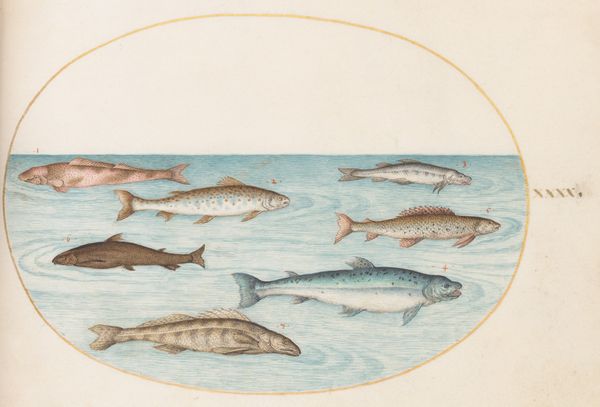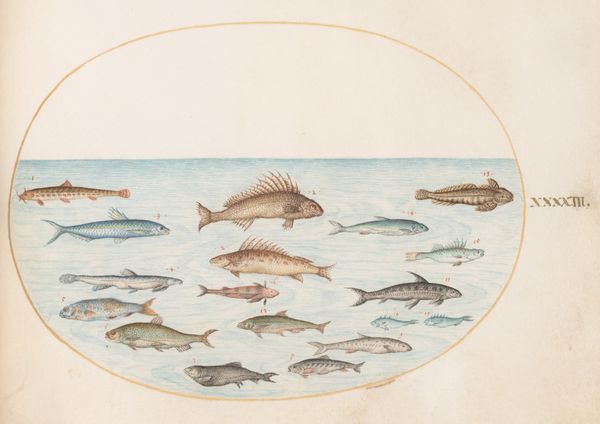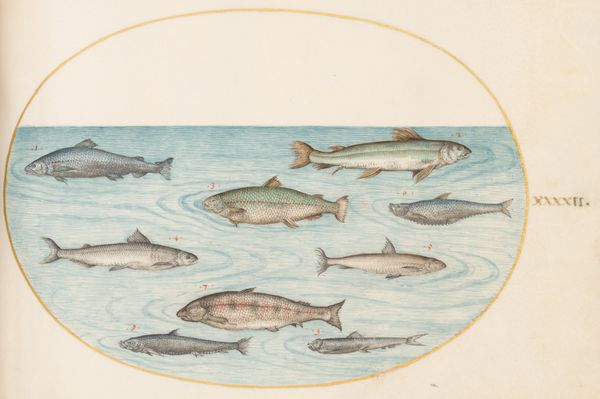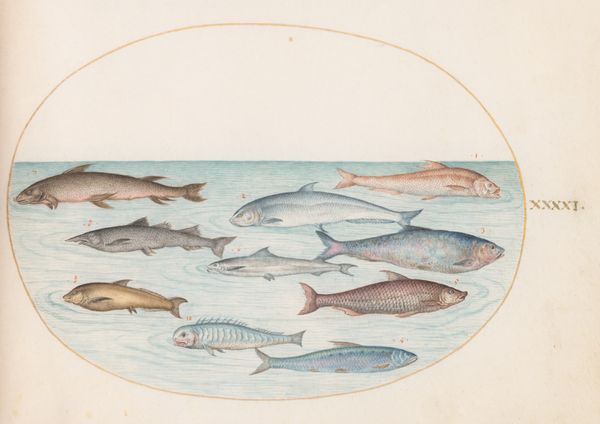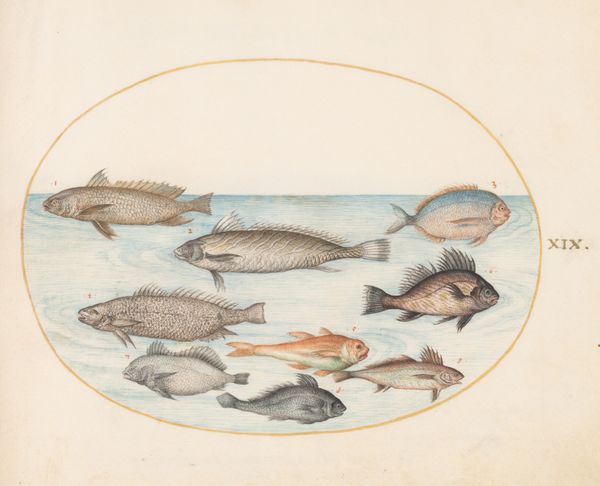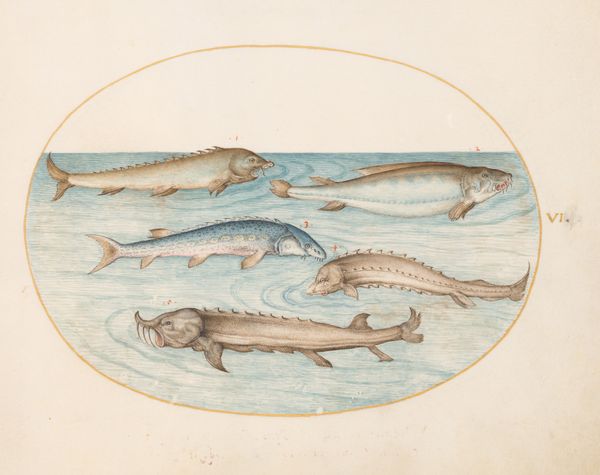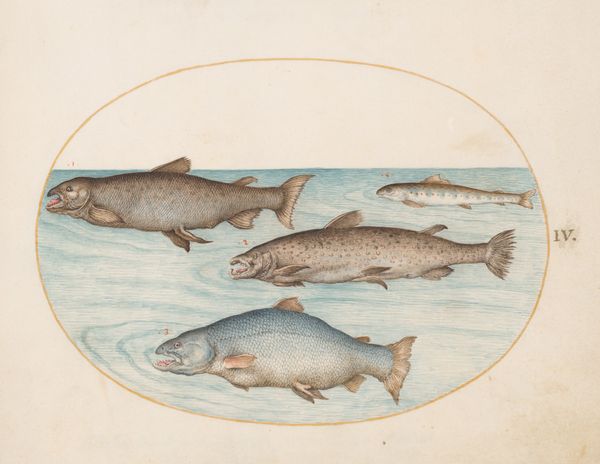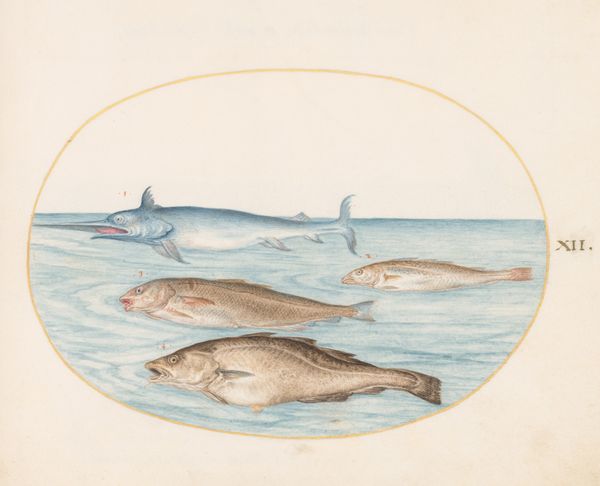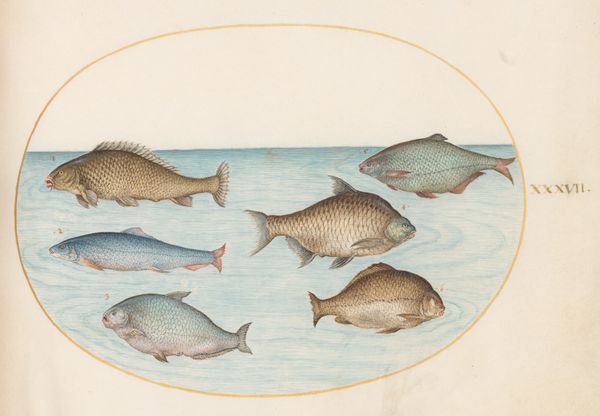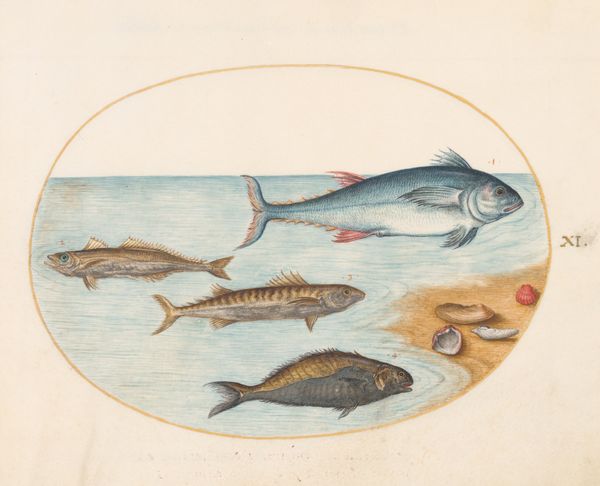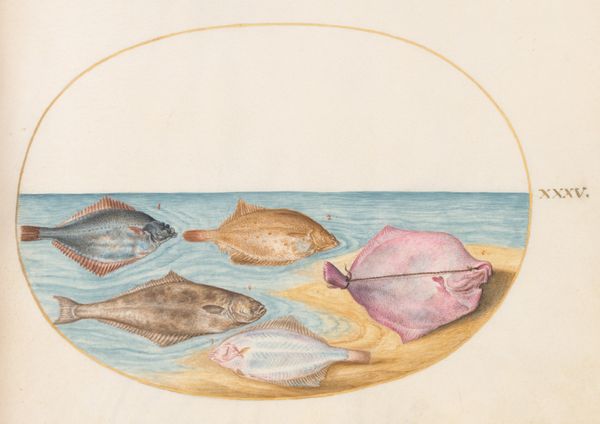
drawing, watercolor
#
drawing
#
11_renaissance
#
watercolor
#
watercolour illustration
Dimensions: page size (approximate): 14.3 x 18.4 cm (5 5/8 x 7 1/4 in.)
Copyright: National Gallery of Art: CC0 1.0
Curator: Let’s dive into this watercolor drawing, dating back to the late 16th century, around 1575-1580. The artist is Joris Hoefnagel, and it's entitled "Plate 15: Six 'Asellorum' Fish (Cod?)". Editor: Oh, it's like a watery, Renaissance-era fever dream! They're all just floating there, these beautifully rendered, slightly melancholic fish, staring out like they’ve seen the future and it’s not pretty. Curator: Hoefnagel was working at a time of significant development in natural history and scientific illustration. Consider the socio-political dimensions—the rise of exploration, colonialism, and a burgeoning need to classify and document the natural world. The fish, possibly cod, become symbols within this larger project. Editor: True, and these aren’t just scientific renderings, are they? I mean, the colours, the little Roman numerals hovering over each fish, give it an alchemical vibe. Almost as if these fish contain some ancient, forgotten knowledge. They’re definitely judging my art choices, I can feel it! Curator: Perhaps we could read this "judgement" as representative of the power dynamics inherent in categorization itself. Who gets to name and classify? What biases inform those decisions? How does representing these fish uphold a specific worldview? Editor: So it’s not just a pretty picture, it’s like... early-modern propaganda for marine biology? Though I’m still stuck on how Hoefnagel captured that wet, glimmery look, even without actual glistening. It's just watercolour! Some kind of witchery, I reckon. Curator: More like refined skill. Hoefnagel utilizes layering and blending techniques to achieve a remarkable level of realism within a medium often associated with delicacy. But think about how the image functions beyond surface aesthetics – how did it influence perceptions of marine life at the time, particularly given expanding trade routes? Editor: Trade routes AND fish. Well I’ll never look at a watercolour or fish and chips the same way again. It is remarkable that it prompts such interesting questions. I love when that happens with a piece. Curator: Precisely. By examining historical context, we can unearth the complexities of art production and challenge dominant narratives about what art *is* and what it *does*.
Comments
No comments
Be the first to comment and join the conversation on the ultimate creative platform.
